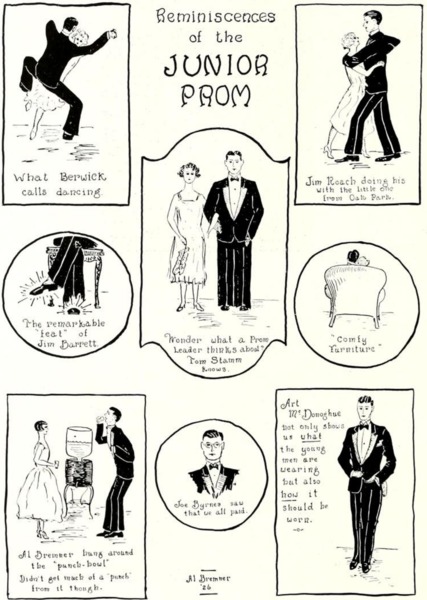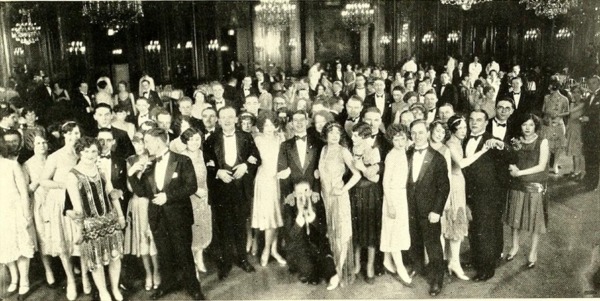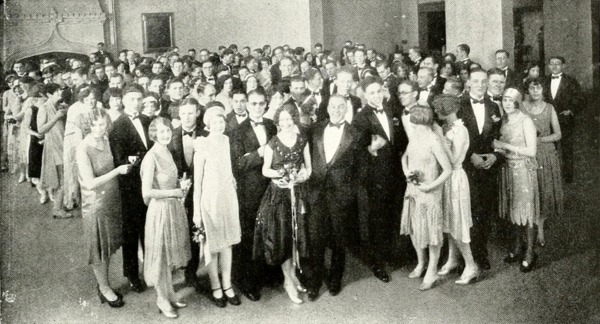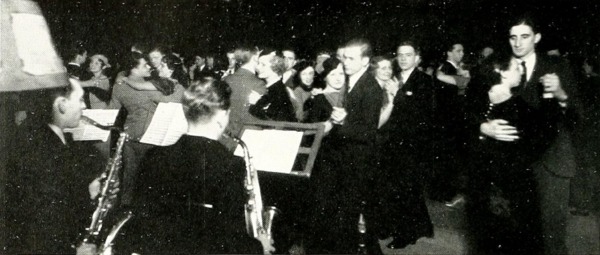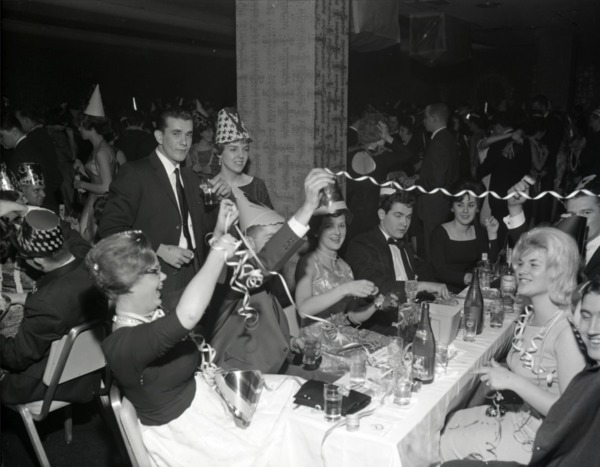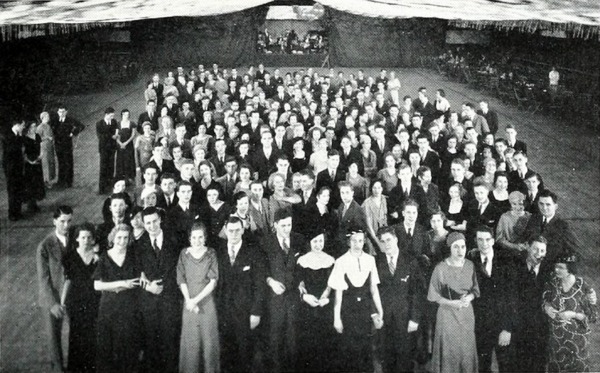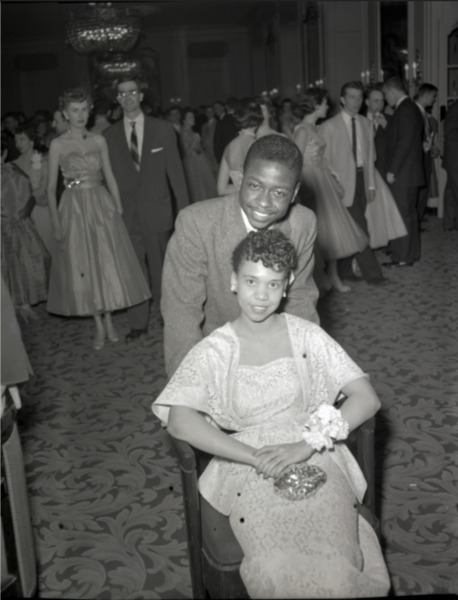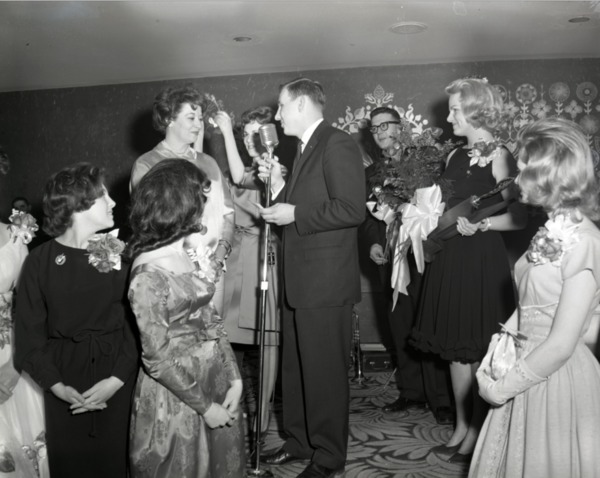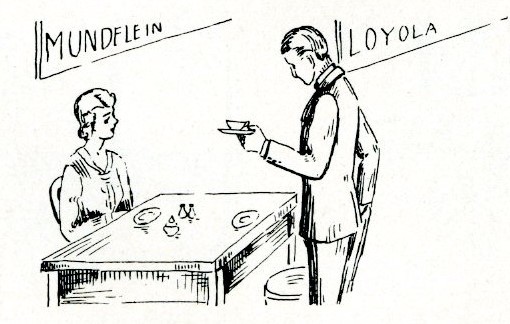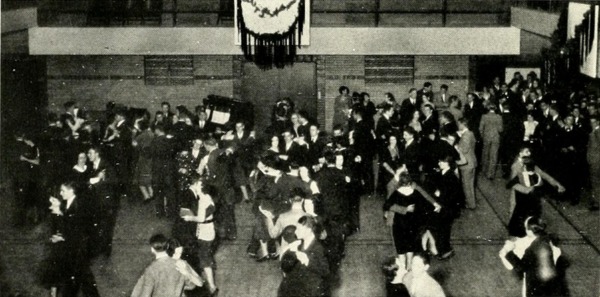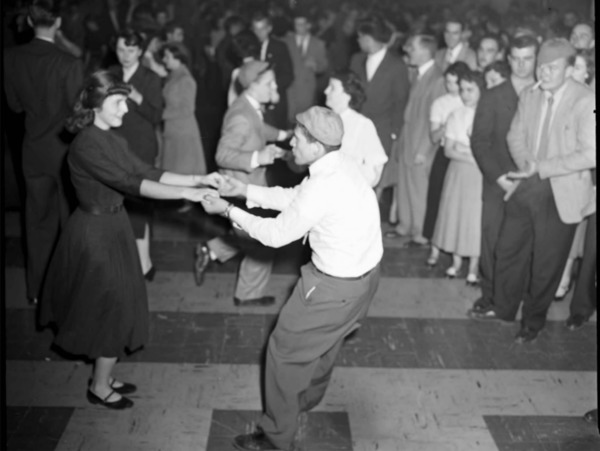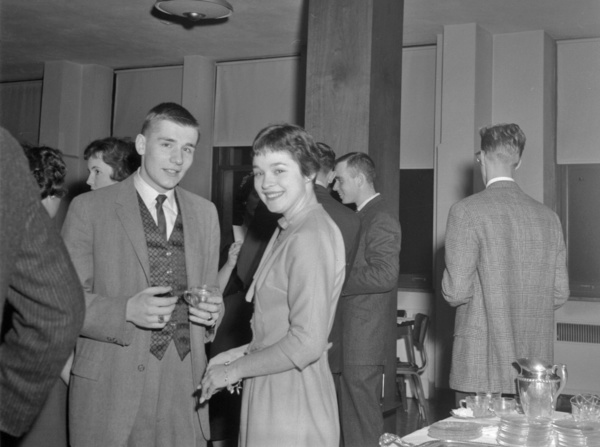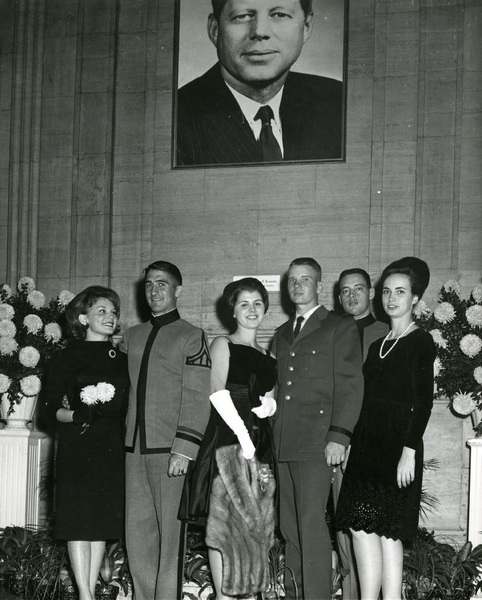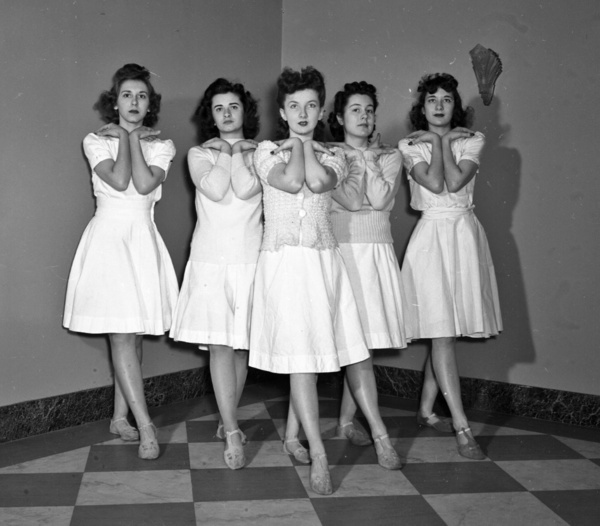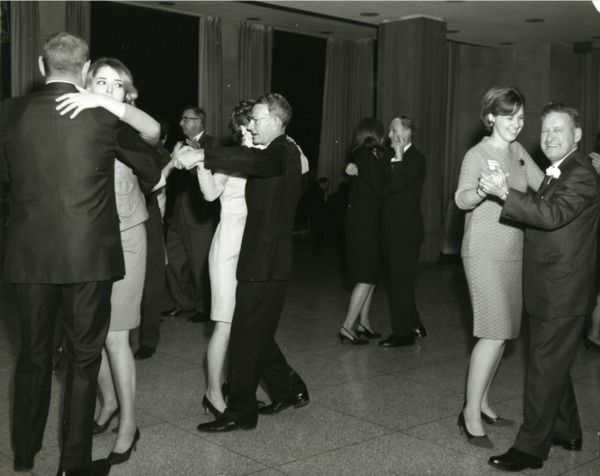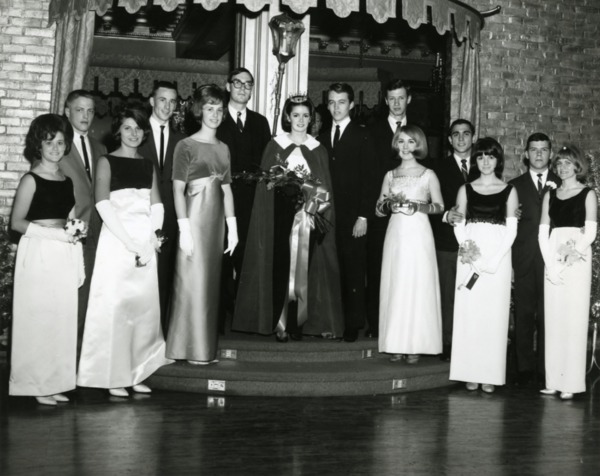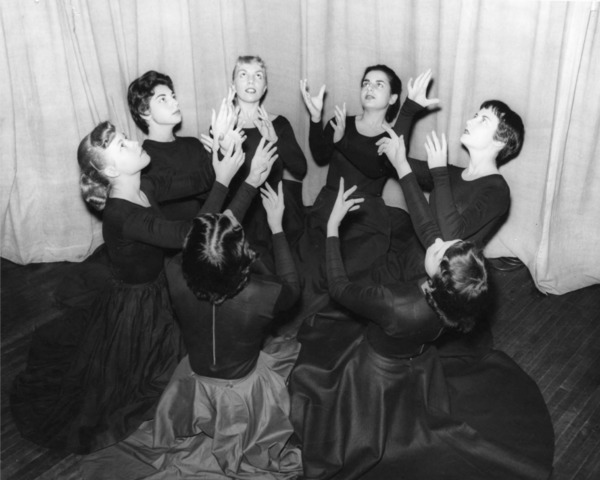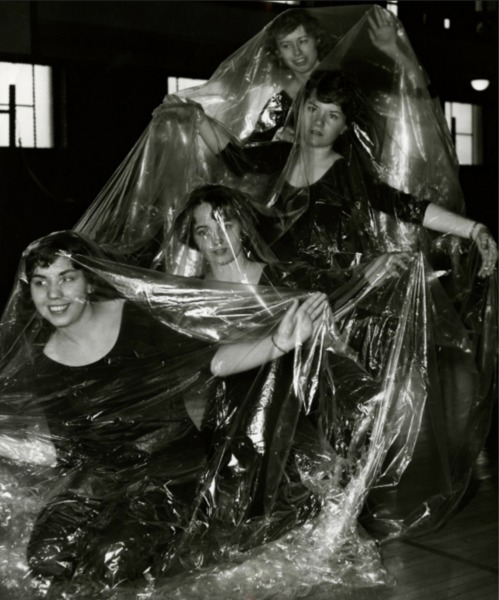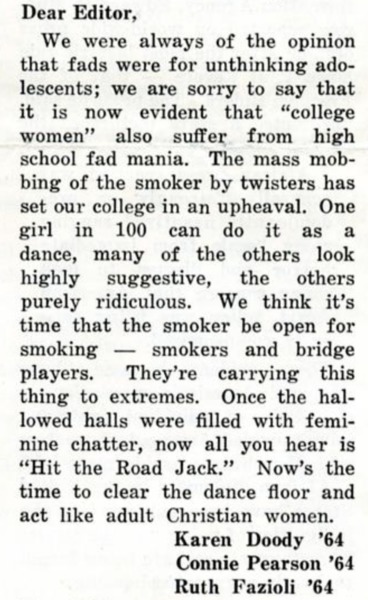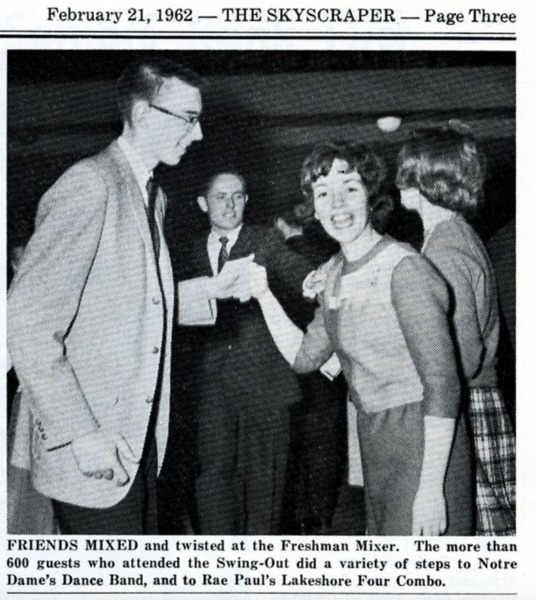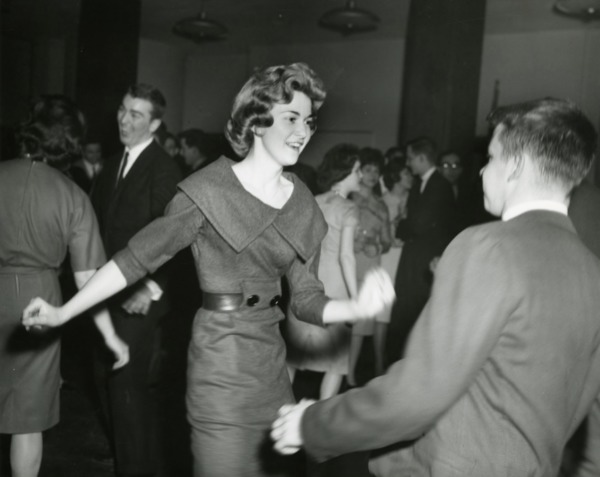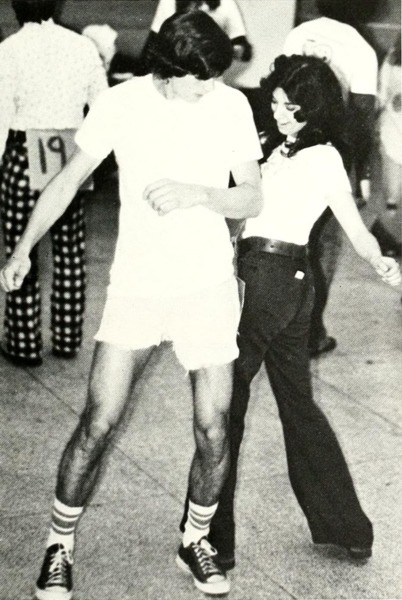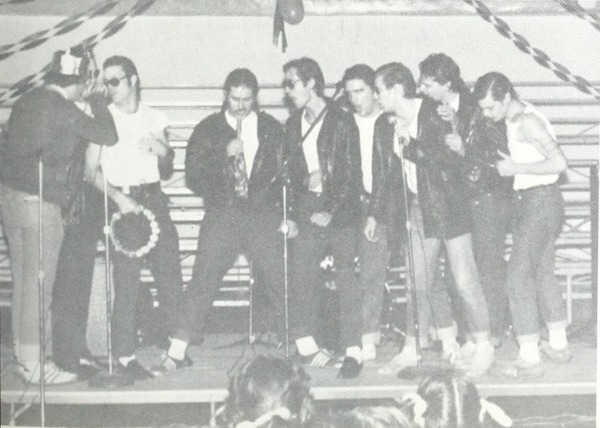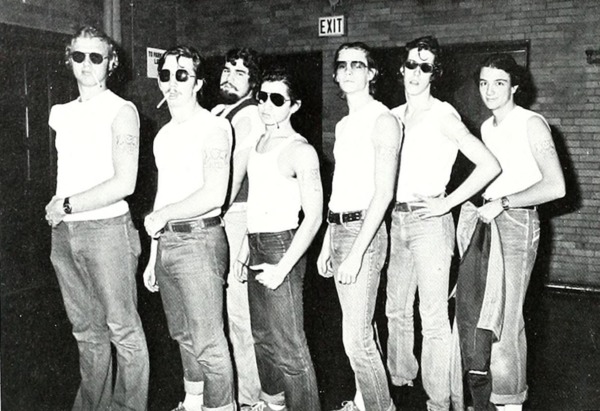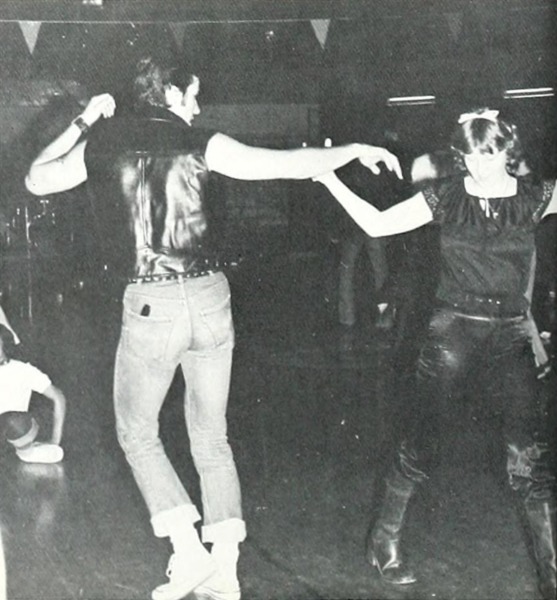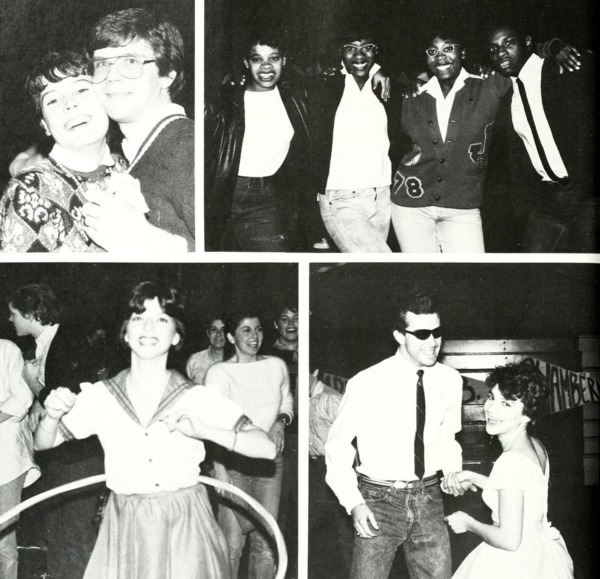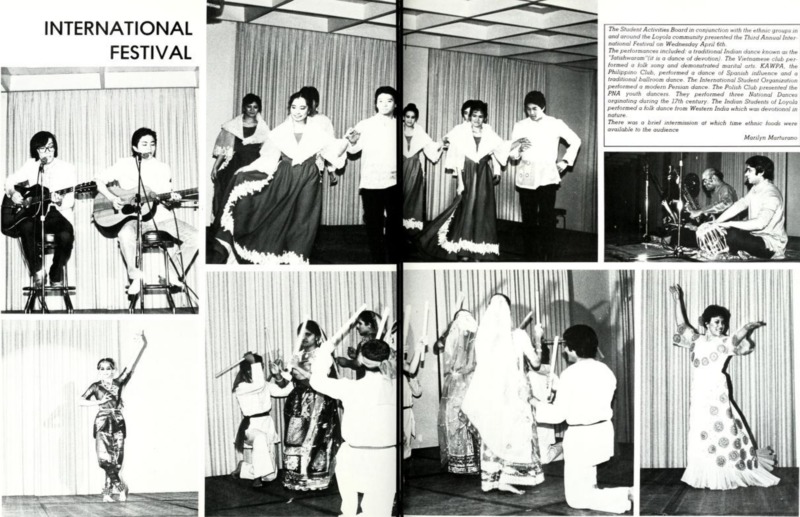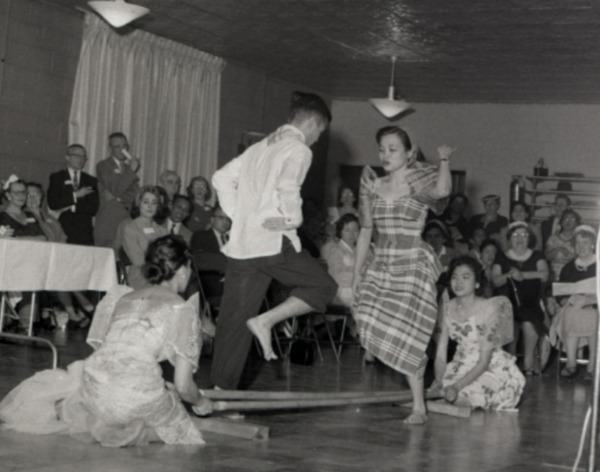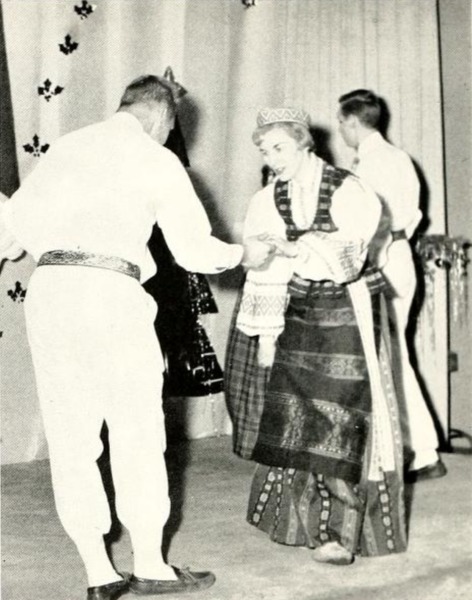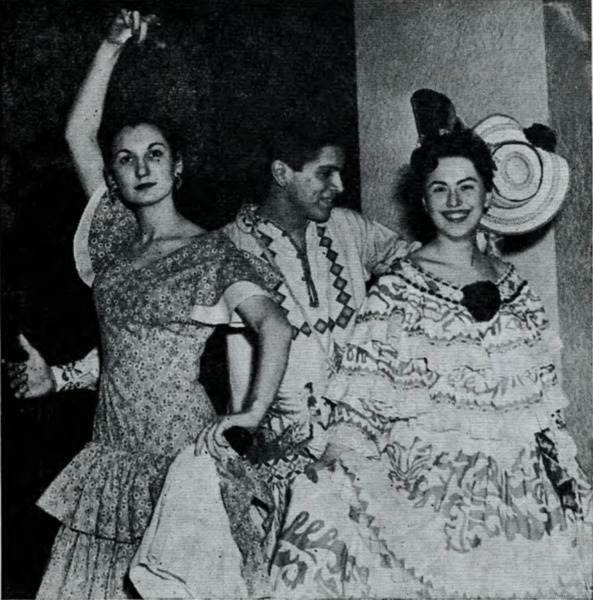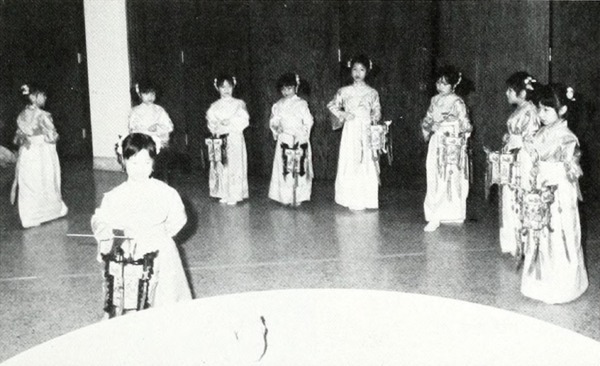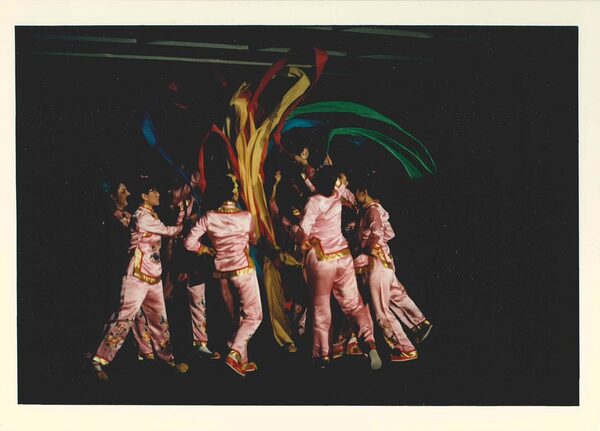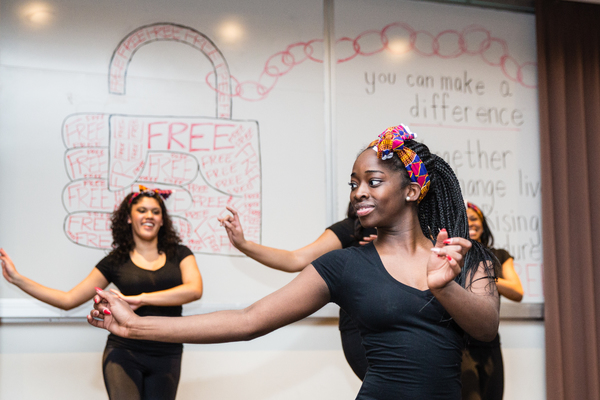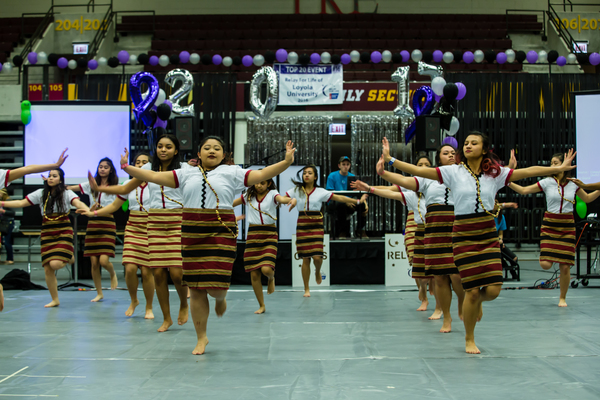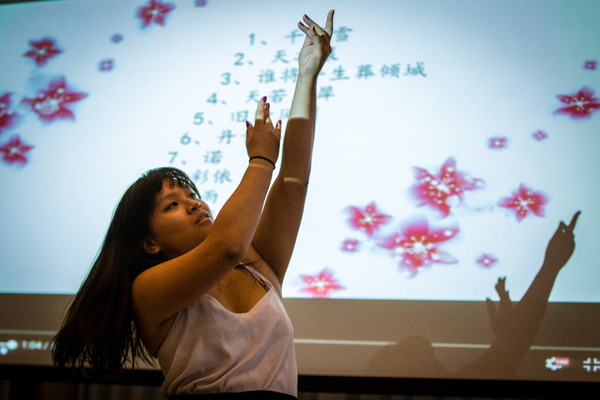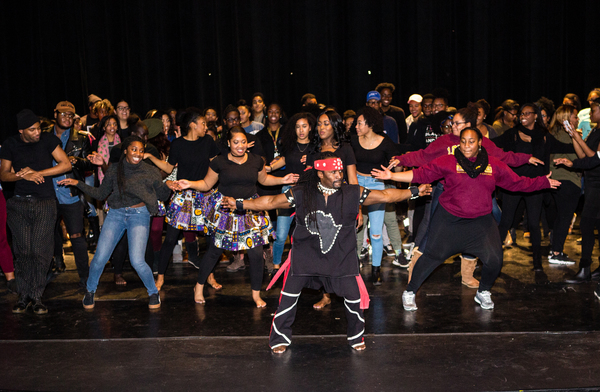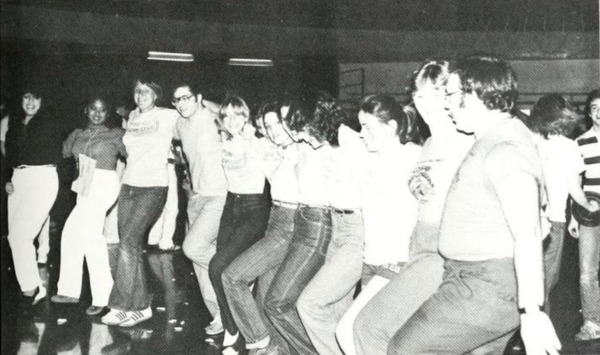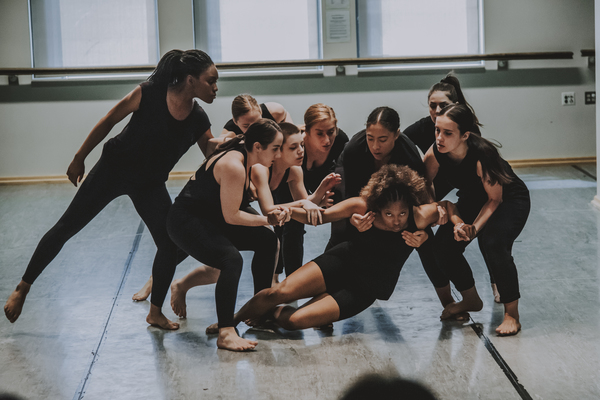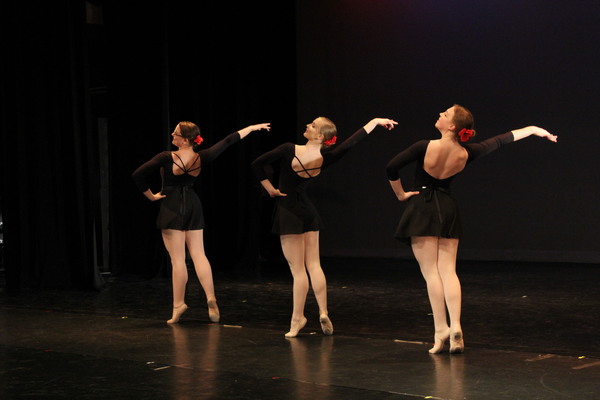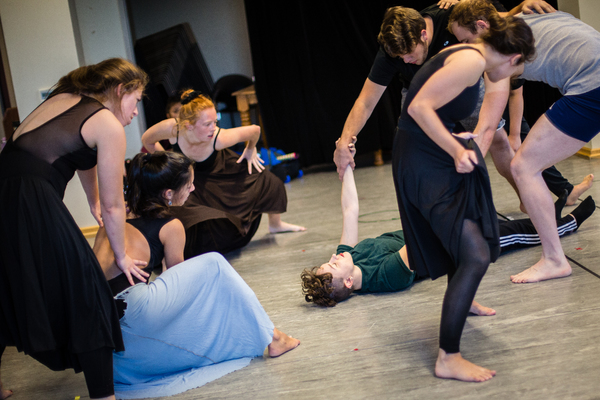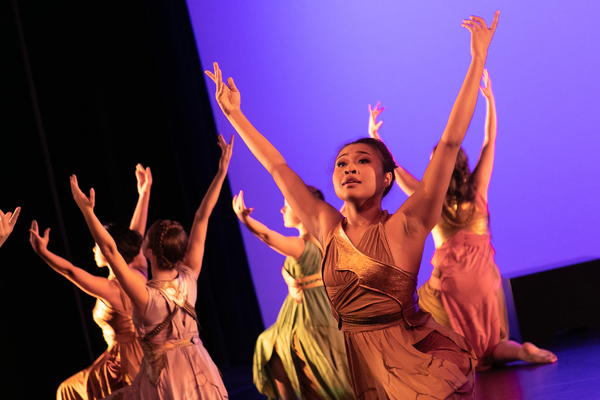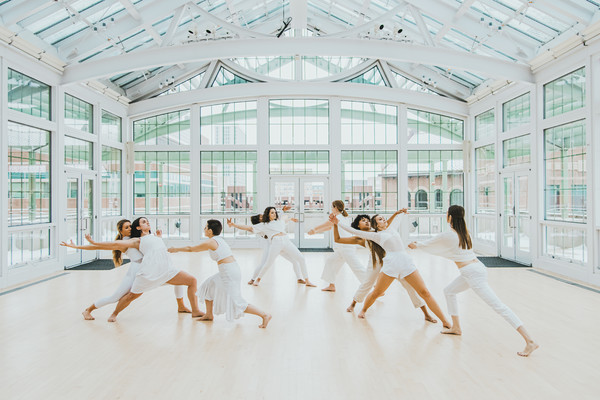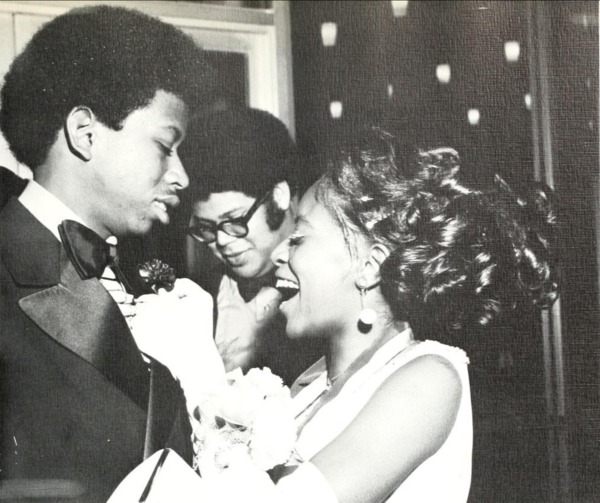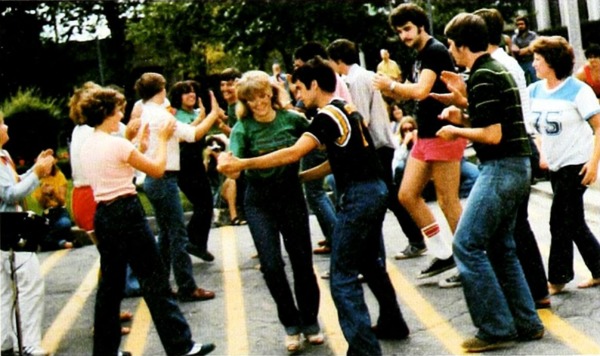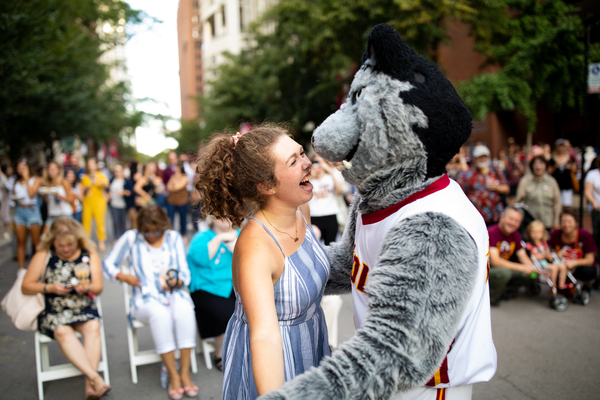Dance at Loyola
As one of the most enduringly popular ways to celebrate, socialize, and show off, dance has not only been a major part of the Loyola experience, but it has also changed dramatically since the school’s beginning. For the past 150 years, students at Loyola have embraced new steps, styles, and attitudes about dance while broadening their ideas of how to define dance and social events. Students have turned to dance to destress after class, to get to know their classmates, and to broaden their engagement with the greater world -- while having fun, of course.
Social Dancing
By the 1910s, social dancing was well established at Loyola. Formal dances offered a chance for students to dress up, hear music, socialize, and dance with dates and friends. While the venues, dress, and music styles changed over the years, dances remained an anchor of the school calendar and a major event to include in yearbooks and summaries of the year.
Most dances through the 1930s were hosted by a class such as the juniors or freshmen, by a fraternity, by a club (such as the annual Loyola News Fall Frolic or the Commerce Student Council's many events), or by the university itself. Many of these dances were then organized by planning committees -- groups of students who arranged the venue, band, menu, invitations, fundraising, and all other aspects of the dance to ensure a smooth, seamless event.
Student newspapers ran advertisements to bring in attendees and reported on the success of recent dances, while yearbooks often recapped the entire year's social season with photos and nostalgic recollections. For some dances, the organizers put extra effort into breaking the ice, passing out "favors and fun-makers," including confetti and streamers, that "had the expected effect of producing just enough hilarity to break down the barriers of formality that so frequently cause social ventures to fail."
Other clubs at Loyola threw dances to raise money for their operations. The Coed Club, for example, raised money through hosting card parties. Even professional clubs, fraternities, and schools, such as the Dental School or the Commerce School, held mixers and social dances throughout the year to relax and have some fun.
Venues
Chicago’s hotels offered a variety of settings to host a dance. Popular ballrooms in the 1920s included the Palmer House, the Drake Hotel, the Hotel La Salle, and the Tower-Town Club, depending on the size of the event. In 1933, the first major dance held on the Loyola campus took place in the new gymnasium, opening new possibilities for dancing and socializing at school.
Performers
The draw of a dance often depended on the type of entertainment. The Loyola News advertised featured dance bands who would provide the music. Big bands such as Carleton Kelsey and his Hollywood Band dominated the 1920s and '30s, while later events opened to a broader variety of local groups, ranging from jazz bands to country western groups. Celebrated ensembles visited Loyola to perform at dances, such as The Four Tops, who arrived to help celebrate Loyola's 100th anniversary in 1970. Yet Loyolans did not always have to look elsewhere for good music. The Loyola Jazz Band and student bands, either in large ensembles or in small combos and quartets, played for dances and participated in parties alongside their classmates.
Contests and Comedy
Some Loyola fraternities, sororities, and clubs developed their own celebration traditions. At some, such as the Delta Sigma Rose Dance and the Phi Mu Chi Queenship Ball, contestants vied to be crowned the Queen or Rose of the year. For other dances, such as the Loyola Fall Frolic, sororities selected one member as a candidate for Miss Varsity. The winner and her court would be announced at the dance, and she would be outfitted with a regal robe. Tau Kappa Epsilon hosted annual University Club St. Patrick's Day Dances, as well as the annual "Ugly Mixer," where the "Ugly Man of the Year" would be crowned.
New Partners
In addition to Loyola’s female students, students from Catholic women’s colleges such as Mundelein College* and Rosary College mixed with Loyola students at dances. Both schools held tea dances, casual afternoon events popular from the 1930s through at least the 1960s. Tea dances offered a way to mingle, get to know students from another school, and enjoy simple refreshments such as coffee, tea, and cake while dancing to live accompaniment. Students put considerable effort into hosting these events. One Loyola student attending a Mundelein tea dance in 1935 "was astounded at the cute paper hearts and red and white balloons that served as decoration," and thought "the girls must have gone to a lot of trouble to hang them so dexterously and so coyly." The music, by a group he remembered as the "Mundelein Melo-dears," was "a rare selection of fast, slow, and medium rhythm -- not, incidentally, disdaining to render obsolete old favorites," and the 150 couples who attended refused to leave the floor until the band had played an encore.
From 1949 to 1961, the annual Beanie Bounce was held for Loyola freshmen and Mundelein students. In early years, Loyola students would give their beanie hats to their Mundelein dance partners. Later, the beanies were given out beforehand, and if a Loyola student could find the Mundelein student with his beanie, he could ask her to dance. Other multi-school mixers took on other themes, such as Coke Dances in the 1940s and later Coed Picnics, yet always included food, music, and new faces.
During World War II, a large portion of the Loyola student body left to serve in the war effort. Far fewer dances were held during the war years, possibly due to a lack of attendees or a new devotion of energy on campus toward the home front. After the war, the tradition of the Cadet Ball began -- fancy affairs held in downtown Chicago ballrooms. Students from Mundelein and Loyola often attended as military personnel, veterans, and dates, either in uniform or formal wear, to dance and socialize with others who had served.
Dance at Mundelein
From the first year of student life at Mundelein in 1930, students organized social dances. Some of their new traditions included the Freshman Frolic on George Washington's birthday (with dancing and cherry pie), Father-Daughter dances, and the annual Skyscraper Ball. These and more dances throughout the year were crucial opportunities for new students to get to know their peers and to feel at home at Mundelein. Yet dancing required practice, and so in 1935 the Social Dancing Club was created to practice everything "from the tango to the Veolanda."
Dance performance also became important at Mundelein College. The 1940s brought new attention to ballet performances on campus, especially in the Mosaics student shows. Modern dance workshops and performances beginning in the 1930s tapped into a new style emerging in the national dance scene. Student groups such as Orchesis, the modern dance club, collaborated with local dance companies as well.
In 1982, Concert Dance, Inc. became an Artist-in-Residence at Mundelein. The dance company used the Mundelein Theatre for productions and began teaching classes in Dance Technique and Dance Performance the next year. By popular demand, Concert Dance, Inc. also sponsored a dance club in which students could work with the company.
Fads and Fashions
Not all new dances lasted, and some stirred up quite a bit of controversy. In 1962, tension over the Twist broke out at Mundelein. Students preferring quieter forms of relaxation such as smoking and playing bridge objected to the noisy music and supposedly ridiculous -- or worse, suggestive -- movements of the dance. Strongly-worded editorials rebuked the critics, pointing out that the Twist was a way to let off steam after class, that dancers did not even touch while Twisting (unlike the traditional waltz), and that Twisters who appeared ridiculous might simply practice on their own beforehand to avoid embarrassment.
Students at both schools took part in other styles of social dance including swing, ballroom, cha-cha, square dance, conga lines, and disco. Every new genre of music demanded new dances, and students found plenty of opportunities to show off their moves.
Not every dance had to be the latest, however. Throwback dances were especially popular in the 1980s. Attendees dressed for the theme of a 1950s or '60s dance -- with quite a few "greasers" and Elvis impersonators in attendance -- and revisited retro music and dance moves.
Sharing Heritage
Since at least the 1950s, cultural dance performances have been part of a Loyola education. From the Philippine Tinikling Dance performed in the Loyola Union to a range of European dances demonstrated at Loyola's Historical Society Christmas Parties, Loyola students shared their own traditions and learned from their peers and guest dancers. This practice continued and grew through the decades, and by the 1980s such dances were part of the weekly Water Tower Campus Tuesday lunch hour series, which any students on campus could attend to learn and enjoy the performance.
The annual International Week or Festival began in 1980. Students could sample foods from various global cuisines while attending performances of dance and music. In 1983 alone, student dancers and musicians presented Indian folk dances, modern Persian dances, Vietnamese folk song, 17th century Polish dances, and Philippine folk and ballroom dances. Meanwhile, cultural and ethnic clubs at Loyola have celebrated their own traditions and cultural heritage at parties and dances, including the Black Cultural Center's Black History Week Dance in the 1970s.
Starting in the 1980s, the South Asian Student Association began partnering with other student organizations to host SASA Night, an annual night of performances showcasing the diversity of Loyola students of South Asian descent. These performances also served as an opportunity to raise funds for international relief efforts and raise awareness of anti-Asian prejudice in the United States. Dances and skits frequently mixed the traditional with the new, and drew hundreds of Loyolans and community members each year.
Cultural dance at Loyola has continued to the present day. As one of many cultural and ethnic clubs with a dance component, KAPWA, Loyola's Filipino Student Organization, has two dance groups -- one cultural and one modern -- that compete with groups from other colleges and explore the importance of dance and music in Filipino culture. More dance groups active in recent years at Loyola include AfroDescent, LUC Irish Dance, Salsa Club, Scorch hip hop dance group, Chicago Dhamaal (fusion of Eastern and Western dance, including bhangra and Bollywood), and the multi-genre The Dance Company.
Dance for a Cause
Around the 1980s, Loyolans put dance to a new purpose. As part of a growing nationwide trend, Loyolans raised money for various charities through dance-a-thons, dance marathons lasting 24 or even 30 hours. Dancers raised money for every hour they danced, and the funds went to support causes such as the Muscular Dystrophy Association. The tradition continues today through LoyolaTHON, the annual dance marathon to raise money for Lurie Children's Hospital and Children's Miracle Network Hospitals. LoyolaTHON, which was founded in 2015, is shorter -- only 8 hours! -- and raises funds throughout the year as well.
Learning Art and Activism
Dance classes had been offered sporadically through various Loyola departments until 2006, when a new program of dance education began at Loyola. Sandra Kaufmann, who had been asked to create a dance program, began by offering introductory courses in ballet, modern, and jazz, which were taught in the basement of the Halas Rec Center with a boombox for music. By 2012, the department had grown and introduced the BA in Dance with a full slate of public performance opportunities for students seeking a dance degree. Today, Loyola dance students take many of their courses in the Mundelein College Skyscraper, which now serves as the Mundelein Center for the Fine and Performing Arts.
From its beginnings, the dance program at Loyola has embraced the Jesuit teaching of cura personalis -- care for the whole person. While students work to train the body and learn to take care of it, they also develop the voice behind it. Activism is key to their studies. Through dance, students explore themes such as climate change and gun violence. Guest artists enrich the program as well through master classes, choreography, and talks on dance advocacy.
Each semester, the dance program's signature event is the Dance Informance, an informal performance held in the Newhart Family Theatre and overflowing into nearby classrooms. Over 170 dance students of all levels, including minors, majors, and other Loyola students enrolled in dance courses, perform for an audience of peers, family, and friends to showcase their growth over the semester.
Students in the Dance Minor have been particularly active beyond the classroom in forming clubs such as The Dance Company, a tap club, and the Social Dance Club. These groups have partnered with other dance clubs such as AfroDescent and performed at fundraisers to help raise money or call attention to various causes.
Loyola Traditions
For decades, Loyola and Mundelein students have turned to dance to celebrate student achievement, to let loose after class, to get to know one another, to learn about themselves, and to grapple with the issues of the day. Annual Loyola traditions such as Welcome Week and the President's Ball feature opportunities for social dancing, from dressed up to casual. Meanwhile, dance performance has been a crucial way for Loyola students to communicate about themselves and their world. On the stage and on the dance floor, dance has been an important part of the Loyola experience for much of Loyola's history, and will continue to bring students together in years to come.
*Mundelein College, founded and operated by the Sisters of Charity of the Blessed Virgin Mary (BVM), provided education to women from 1930 until 1991, when it affiliated with Loyola University Chicago.

